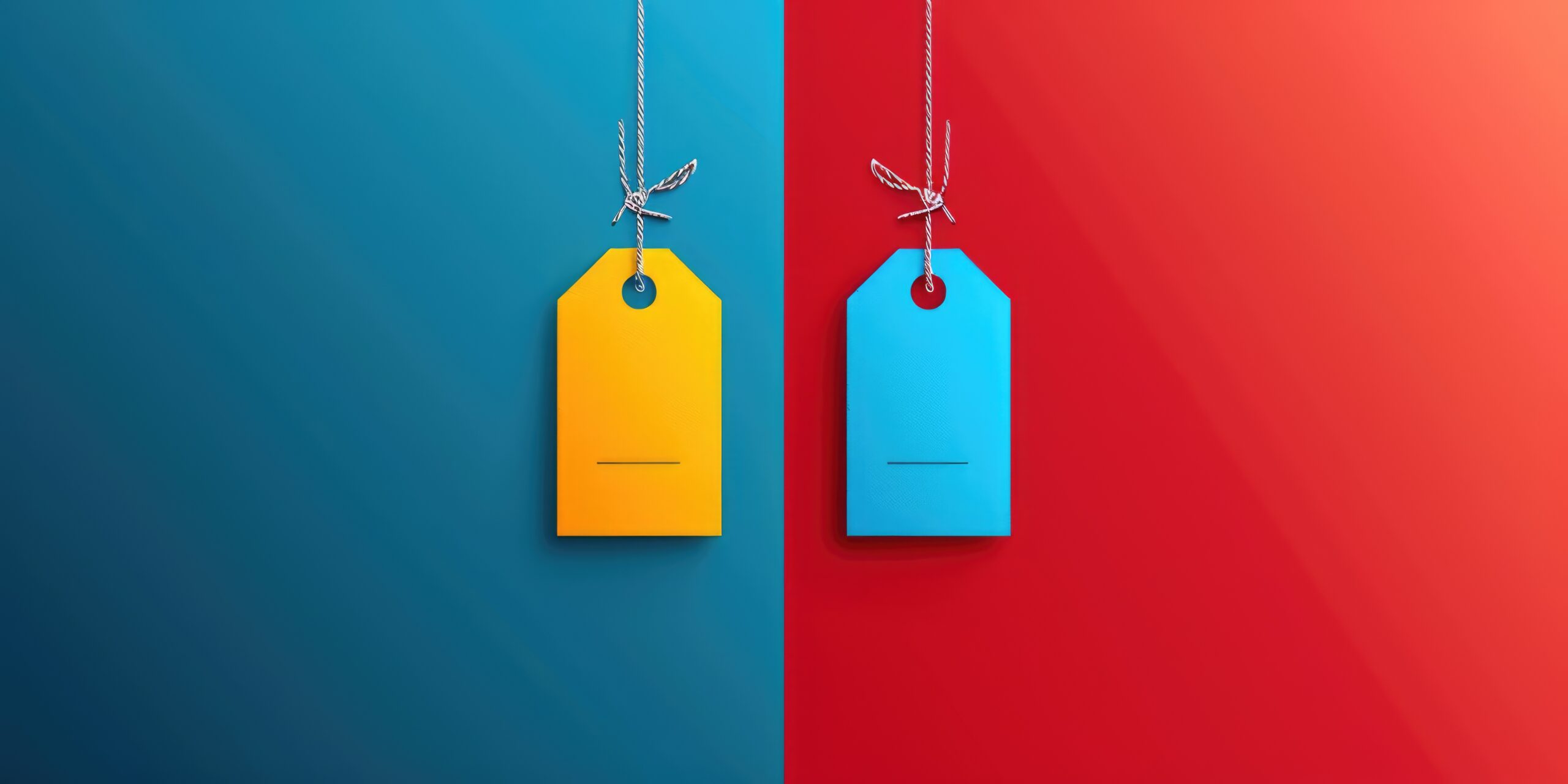Learn what product bundling is and explore its various types. Discover how businesses can implement this strategy effectively and leverage PIM to enhance efficiency, boost revenue, and drive growth.

Keywords
You’ve seen it everywhere—your favorite fast-food combo meal, a skincare set promising the perfect routine, or a “buy more, save more” deal that’s too good to resist. There’s something about getting multiple products together that feels like a better deal, a smarter buy, and an easier choice. The name of this approach? Product bundling.
Whether it’s about convenience, savings, or just the thrill of a great offer, businesses have long used this strategy to keep customers coming back for more. But what makes this approach so effective, and how can brands best leverage it? Let’s dive in.
Ever find yourself leaving a store with an overflowing shopping bag, wondering how you ended up with so much more than you planned? That's the magic of product bundling!
A retail strategy that’s been around for decades, bundling involves combining products or services into one sales unit. It can take many forms, from same-product bundles like a shampoo and conditioner duo to hardware and service bundling, like a gaming console with extra accessories or even a tasty meal deal!
No matter the approach, product bundling is a smart way to boost value for customers while increasing sales for businesses — and the numbers back it up. In fact, companies that implement product bundling strategies see an average 30% growth in revenue, making it a great deal for both shoppers and sellers.
When it comes to product bundling, there are different types that businesses employ:
A pure bundle is a package where the individual products can’t be bought separately; they only come as part of the set. This approach increases perceived value and encourages customers to purchase the full bundle if there is a particular product they’re after.
Example: A software suite like Microsoft Office 365, which includes Word, Excel, and PowerPoint, is only available as a bundle rather than individual software purchases.
New product bundles introduce a fresh release alongside an existing, well-loved product to encourage adoption. This helps new items gain traction by leveraging the popularity of proven bestsellers!
Example: A beauty company offering a discount on its newest moisturizer with a purchase of one of its most popular exfoliators.
These bundles allow customers to personalize their selections from a set of related products, creating a more customized shopping experience, which can be great for boosting sales and customer satisfaction.
Example: Build-A-Bear allows customers to mix and match different stuffed animals, outfits, and accessories to create a fully customized bundle, making each purchase unique.
Cross-sell bundling combines complementary products that naturally go together, encouraging customers to buy related items they may not have considered.
Example: A gaming console bundle that includes the console, an extra controller, and a popular game, encouraging customers to purchase everything they need for the ultimate experience!
Designed for special occasions like holidays and celebrations, gifting bundles combine multiple thematically linked items for an effortless, ready-to-gift experience. They encourage shoppers to spend more in exchange for greater savings.
Example: A holiday skincare gift set that includes a cleanser, moisturizer, and serum, neatly packaged as a ready-to-gift item. For instance, Lush offers beautifully wrapped gift sets featuring bath bombs, soaps, and skincare products—making them easy, gift-ready purchases for special occasions.
Retailers often use these bundles to move excess stock by pairing slower-selling items with popular ones, helping reduce overstock while still providing value to customers.
Example: A fashion retailer bundling last season’s jeans with a trendy new-season top, making it an appealing deal while selling old stock and ensuring it doesn’t go directly into a landfill.
Buy One, Get One (BOGO) bundles offer an extra product at no additional cost, either as a freebie or at a discount. This strategy drives impulse purchases and increases sales.
Example: A fragrance company offering a deal to receive a free candle upon purchasing recently released body wash; Bath & Body Works is notorious for their BOGO deals and bundle deals.
In a competitive market, businesses need strategies that increase sales, enhance customer value, and boost brand loyalty — and product bundling does just that.
A good example of this is the notable brand Sony, whose strategic use of product bundling has significantly impacted its sales performance. During a major summer promotion in 2023, Sony offered PlayStation 5 consoles bundled with popular exclusive games at discounted prices. This initiative led to a notable resurgence of these titles in the UK sales charts, with several PlayStation exclusives re-entering the top 10. The success of this bundling strategy not only raised game sales but also increased the adoption rate of the PS5 console, proving that the right bundle can be a true game-changer!
Additionally, in the second fiscal quarter of 2024, Sony reported selling approximately 77.7 million games for PlayStation 4 and PlayStation 5, which was a significant increase from 53.6 million units in the previous quarter. Although other elements also likely contributed to this growth, strategic bundling was a key factor in the increase in sales.
Besides giving customers the enjoyment of a sweet deal, product bundling is also the gift that keeps on giving. Like any marketing tactic, bundling comes with both advantages and challenges, and recognizing both sides allows businesses to implement bundling strategies more strategically.
In short, product bundling is a win-win strategy that makes customers feel like they’re getting a steal while your business enjoys bigger sales and smoother operations!
So how do you successfully execute this strategy?
Throwing random products together and calling it a bundle won’t cut it — successful product bundling requires strategy. The goal is to create bundles that offer real value, make shopping easier, and encourage customers to buy more without feeling pressured. Here’s how to do it right:
Ensure the items naturally go together, like a laptop and a wireless mouse, or shampoo and conditioner. The bundle should enhance the customer’s experience, not feel like a forced pairing.
Customers should instantly see the benefit of the bundle, whether it’s cost savings, convenience, or an exclusive deal they can’t resist.
The discounted price should be attractive enough to encourage buying but not so steep that it hurts profitability. A small perceived saving can make a big difference! Studies suggest that consumers are more likely to purchase bundles when they perceive a discount, even if the actual savings are minimal. 
Mix-and-match options or customizable bundles increase engagement and let customers feel in control of their purchase.
Highlight bundles on your website, through email campaigns, and in-store promotions. Product Information Management (PIM) solutions can be a big help here, as they can help enrich and optimize the products’ data with descriptive titles and high-quality images to perfectly showcase the bundle. You can even use urgency tactics like limited-time offers to drive conversions!
Track sales data and customer feedback to see which bundles perform best, then adjust based on demand.
Product bundling isn’t just about moving more product at all costs; it’s about crafting the ultimate shopping experience and providing thoughtful, curated, and personalized options for consumers. When bundles are thoughtfully designed, they boost value, simplify purchasing decisions, and drive sales without feeling forced.
Whether you’re pairing complementary products or creating irresistible deals, the key is to make bundling feel like a no-brainer. Because let’s face it — who doesn’t love getting more for less?
Our Akeneo Experts are here to answer all the questions you might have about our products and help you to move forward on your PX journey.


Explore why outdated SEO tactics no longer meet the demands of today’s search behavior—and how to adapt. From intent-focused strategies to the...
Read more
Learn how brands like Perplexity, Sephora, OpenAI, and Amazon are leveraging AI to reshape the customer journey—from intent-based search and...
Read more
Leading analyst firms IDC and ISG have released their 2025 assessments of Product Information Management (PIM) and Product Experience Management...
Read more